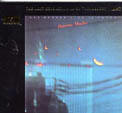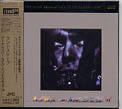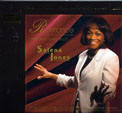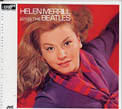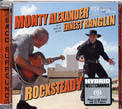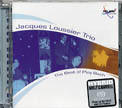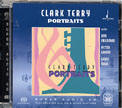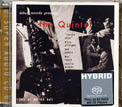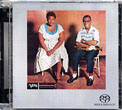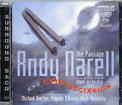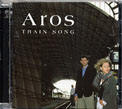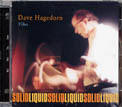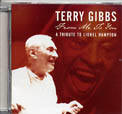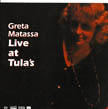|
You are reading the older HTML site Positive Feedback ISSUE 12march/april 2004
Hi-Res reviews featuring our friends from Audiophile Audition, Part 2 April 2004 - Jazz Let’s start off with one of the hi-res formats which doesn’t require any special decoders or players and which has made a hit with many audiophiles willing to pay more for the very best that can be achieved with 44.1K CD technology
Landscape - Art Pepper Live in Tokyo '79 - JVC xrcd24 VICJ-61035 (52 min.)
Besame Mucho - Art Pepper Live in Tokyo '79 - JVC xrcd24 VICJ-61158 (47 min.) This is really a double-CD package but released as two separate albums (otherwise the package would run $60). With George Cables on piano, Tony Dumas, bass and Billy Higgins on drums, the quartet of the leading alto saxist knocked 'em dead at the Shiba Yubin Cholin Hall in Tokyo in July of that year. The notes are nearly all in Japanese, but in the middle of them is a list in English of all the tunes played at the concert with those on the two xrcds in bold. It shows that the tunes are not consecutive but picked out of the concert at various points to construct a balanced concert on disc. The Japanese tend to favor Latin music, and the Besame Mucho album has a 12-minute Mambo de la Pinta just before and a Shadow of your Smile before that to keep up the Latin flavoring. The Landscape disc is highlighted by a glorious 11-minute version of Over the Rainbow. Pepper is picked out with amazing clarity and presence by both JVC’s original recording and the super-careful processing steps dictated by the xrcd approach to improved fidelity. Either or both of these discs would be gems in the library of any audiophile who loves the straight-ahead no-nonsense modern jazz quartet idiom. Tracks: (Landscape) True Blues, Sometime, Landscape, Avalon, Over the Rainbow, Straight Life; (Besame Mucho) Red Car, The Shadow of Your Smile, The Trip, Mambo de la Pinta, Besame Mucho. John Henry
Romance with Beethoven, Bach... and Salena Jones - JVC xrcd24 VICJ-61157 Jazz interpretations of well-known classical themes were a big thing during the swing era of the 30s and 40s, though usually instrumental rather than vocal. The popularity of mixing classical and jazz has since then been much stronger in Europe than in the U.S., and it appears from this release there might be a sizeable audience for it in Japan as well. It turns out that singer Jones conceived of the entire thing herself and produced it at a studio in London with special arrangements by Alan Bence and members of the Pro Arte Orchestra joining her nine-piece combo. For once there are notes in English with the disc—in fact a paragraph on each and every tune, what work the theme was derived from and what to listen for. An entire vocal album devoted to these swinging treatments of familiar classical themes is highly unusual—this may actually be a first. I wasn’t especially familiar with Salena, but she has a warm and resonant contralto voice in this, her 35th solo album. She has a relaxed delivery and enunciates clearly without overdoing it. Several of the themes existed as instrumentals without any lyrics, so Salena had a duo of Ann Rachlin and Iain Kerr adapt and create new lyrics for them. Tchaikovsky seems to be the most popular source here, with Debussy a close second. I would never have expected songs based on themes of Albinoni and Bach, but they are here too - Air on the G String from the latter. The instrumental backing is very tasteful - strongly lyrical when it needs to be and swinging when there’s a stronger beat inherent in the music. Some jazz fans turn up their noses at such mixes of their world with the longhair, but I think even they will be won over by Salena’s classy style and the terrific production values of this unique vocal collection. The transparency of JVC’s xrcd sonics contribute immensely to the success of the enterprise as well. Tracks: A Summer Love, My Reverie, If You Are But a Dream, No Other Love, Moonlight Love, Email Female, Don’t Speak of Me, Full Moon and Empty Arms, Tonight We Love, Don’t Say Too Much, Till the End of Time, These Are the Things I Love, The Story of a Starry Night, Moon Love, You’ve Got a Friend. John Henry
Helen Merrill Sings the Beatles - (with Masahiko Sato, piano & arranger; Yasuo Arakawa, bass; Takeshi Inomata, drums & others) - JVC xrcd24 SVCD-1043 (39 min.) I had thought that Beatles arrangements in jazz or classical guise had become rather passe, but they keep coming and I for one am not complaining. It almost seems that Lennon and McCartney’s music has an indestructibility about it, and just as with Bach almost any sort of transcription of it comes out at least interesting if not a total winner. This recording session dates from l970 and it shows the staying power of the Beatles in that it really doesn’t sound a bit dated. Merrill was one of the top jazz vocalists of her time and was sometimes compared to Billie Holiday. Japanese jazz fans considered her album What’s New? the best jazz album of the last 50 years. What’s to say except: great music, great singing, great sonics. Tracks: Let It Be, Lady Madonna, Because, The Word, Norwegian Wood, Here There and Everywhere, Golden Slumbers, And I Love Him, In My Life, Mother Nature’s Son, If I Fell, I Want You. John Henry
Monty Alexander w/Ernest Ranglin, Rocksteady Telarc SACD-63581 Multichannel/Stereo SACD This album makes "hard" use of the surround channels, much like the older DMP recordings where the listener is placed right in the center of the performance. This is one of the first discs I encountered where I just had to take it out of surround and listen to the stereo version—it was just too distracting and I couldn’t just sit back and enjoy the music. The 2-channel mix isn’t exactly what I expected either. It seems that the instruments are "hard" panned with the percussion in the right channel, melodica in the left, and other instrument right in the center. It sounded a lot like some older jazz records or pseudo-stereo Beatles albums from the early days of stereo. The music is lite jazz and the quality of the recording is superb. And it’s quite interesting as well—just take a listen to track 2 and hear the combination of melodica and guitar. The music is so easy and fun that it makes me think of spry kids frolicking. Songs like "Nightwork" have a funky groove that gives it a playful quality as well. All the tunes are from Ska/Blue Beat and Rocksteady era from the late 60s and early 70s. The album finishes with "Redemption Song," the Bob Marley tune. As Monty puts it, "Bob is our greatest hero and prophet. He put Jamaican music on the map worldwide. He is our Duke Ellington." Songs included are: Double Barrel; Confucius; Stalag 17; Marcus Garvey; Nightwork; East of the River Nile; Israelites; Row Fisherman; Freedom Street; Pressure Drop; At the Feast; Redemption Song. Brian Bloom
Jacques Loussier Trio, The Best of Play Bach - Telarc multichannel SACD-63590 The French pianist has been jazzing up Bach since 1959 and continues to win new audiences all around the world with his special talent for swinging Bach’s themes without ruining them. In order to put together a Best Of album, Telarc didn’t need to go way back to the 60s - Loussier had done some such recordings in France in l993 and 94, and they were multitrack, though using PCM rather than DSD recording. the label’s Michael Bishop remixed them for this multichannel SACD. Eleven selections in all; a nice impression of the trio right in front of you. Loussier himself explains how he got started and how he goes about creating his arrangements in a two-page article in the note booklet. Selections: Prelude No. 1 from the WTC, Italian Concerto, Air on a G String, Toccata & Fugue in D Minor, Pastorale in C Minor, Jesu Joy of Man’s Desiring, Gavotte in B Minor from Suite in D Major, Fugue No. 5 in D Major, Gavotte in D Major. John Sunier
Four important trumpet players with a firm place in jazz history are next...
Clark Terry, Portraits (with Don Friedman, piano/Victor Gaskin, bass/Lewis Nash, drums) - Chesky multichannel SACD267 This terrific Terry album has been in the Chesky catalog for some time years in a stereo CD version. It was recorded the day after his 68th birthday in 1988 and according to the notes going direct to two-channel DAT. So it would be interesting to know how this multichannel mix was derived. I doubt if RCA Studios—where it was recorded—were using a purist Blumlein mike pickup. Perhaps a multi-track master was run at the same time because the surround mix sounds fairly discrete. Terry is one of the great humorists of jazz, right up there with Dizzy and Jack Sheldon. Many of his stories about the tunes are included in the booklet with the disc. The track Finger Filibuster is Terry’s own tune, and has him scat singing in the style of his hilarious previous "Mumbles" recording. The Finger part of the title refers to the difficult fingering on the trumpet required for this one, and the Filibuster part comes from "politicians who say the same thing over and over." Jive At Five is the lengthiest work here - an original from fellow trumpet player and general cut-up Harry Sweets Edison. Tracks: Pennies from Heaven, Sugar Blues, Autumn Leaves, Finger Filibuster, Little Jazz, When It’s Sleepy Time Down South, Jive at Five, Ciribiribin, Ow, I Can’t Get Started, I Don’t Wanna Be Kissed- John Henry
Relaxin’ with The Miles Davis Quintet (Davis, trumpet; John Coltrane, tenor sax; Red Garland, piano; Paul Chambers, bass; Philly Joe Jones, drums) - Prestige/Fantasy mono SACD PRSA-7129-6 This classic Miles session from l956 has been reissued several times in different forms. I had the dcc gold CD reissue for an A/B test. The first difference I noted was Miles’ comment to Van Gelder in the studio before the music began, "I’ll play it and tell you what it is later." That was surprisingly edited out in this SACD version. Since it was right at the start, do you suppose the tape got damaged and couldn’t be used, which can happen? At least it didn’t ruin the music. Miles’ trumpet has an edge to its sound on both discs, but on the gold disc it’s more like tissue-and-comb edginess, whereas on the SACD it sounds like the normal edgy sound that Miles was striving for. When Coltrane comes in on the first track he is off mic and that is noticeable on both discs, but on the gold CD the sax sounds very thin and on the SACD it has more body to it. On the SACD each note from bassist Chambers is cleaner and more distinct than on the gold disc. There is also improved clarity of individual notes on Garland’s piano; the contrast reminded me of the difference between good dynamic headphones and Stax electrostatic ones. This is another of Rudy Van Gelder’s "deep mono" tapings and the added detail provided by SACD makes it even deeper and wider. Definitely worth having—unless you have the LP and a really good turntable system. Tracks: If I Were a Bell, You’re My Everything, I Could Write a Book, Oleo, It Could Happen to You, Woody’n You. John Henry
"The Quintet" in Jazz At Massey Hall (Charlie Parker; Dizzy Gillespie, Bud Powell, Charles Mingus; Max Roach) - Debut Records/Fantasy mono SACD DSA-124-6:
Ella Fitzgerald and Louis Armstrong, Ella and Louis (with Oscar Peterson, Herb Ellis, Ray Brown, Buddy Rich) - Verve stereo SACD 31458 95982 Armstrong, on the other hand, was not used to such an intimate and quiet session and didn’t have any of his All-Stars on hand to support him. The slow (for him) tempos and cabaret-style treatment of the tunes was almost like an art song recital than the show biz/jam session he was used to. However, without all the usual backing we get to hear both Louis’ gravely voice and his amazing trumpet with a close-up and unadorned realism that is truly magnificent. That all comes across fine on the CD layer but the SACD layer ups the ante considerably. What a kick! I’m not even into vocals that much, but I was bowled over! Tunes: Can’t We Be Friends?, Isn’t This a Lovely Day?, Moonlight in Vermont, They Can’t Take That Away from Me, Under a Blanket of Blue, Tenderly, A Foggy Day, Stars Fell on Alabama, Cheek to Cheek, The Nearness of You, April in Paris. John Henry
Andy Narell & Calypsociation, The Passage (Music for Steel Orchestra) with special guests Michael Brecker, Paquito D’Rivera & Hugh Masekela - Heads Up multichannel SACD HUSA 9086 Narell has pioneered the place of steel drums in contemporary music. He has recorded with many different ensembles and was the first non-Trinidadian to arrange for their mass-steel-bands Panorama competition that sometimes featured up to 300 pans going at once. When visiting Paris in 2001 he was amazed to find a large and totally professional steelband there named Calypsociation. This album is his collaboration with the 30-piece group plus three very special guest performers—including one from Cuba and another from South Africa. He was turned on by the sound of their soloing in front of the big steelband. Narell says he worked for two years with Calypsociation preparing to make this recording and they spend hundreds of hours work making and then mixing the album. He wants to redefine the art of steelband recording. And so he has—this is surely the most impactful and involving recording ever made of the metal-drum instruments, and the three jazz soloists add a great deal to the mix. The names of some of the pans are interesting—one type is called double guitar and triple guitar and still another is the 4 cello. I thought of the pioneer steelband recordings made by Emory Cook in the Caribbean in the early 1950s; they were the highest-fidelity field recordings anyone had done, but just mono. Ear-opening, but nothing like the excitement of this 5.1 surround celebration that puts you smack in the center of a roaring steelband with melodies soaring around you as they progress at high speed from one pan to another. This is what surround sound for music is all about! Tracks: The Passage, Song for Mia, The Long Way Back, Sea of Stories, Mabouya, Dee Mwa Wee, Coffee Street. John Henry
Aros, Train Song (Rob Armus, tenor sax; Marion von Tilzer, piano; John Korsrud, trumpet; Anne Wood, violin; Sven Schuster, bass; Alan Purves, percussion) - Songlines multichannel SACD SGL SA1546-2 More compelling music-making from the diverse musical capitol of Amsterdam. Aside from the violin, the makeup of this sextet isn’t that different from a typical jazz sextet, but its sound certainly is. A rhythmically active chamber music sound would be a good short description, blending elements of jazz, classical and new music in an improvisatory style that’s just as close to the improvisations of Mozartian cadenzas as it is to standard jazz improvisation. Influences here not often found in American jazz are tango, folk themes and minimalism. But there are some free jazz numbers as well. The title tune, Train Song, sounds like a blend of Michael Nyman soundtrack music for Peter Greenaway films and Moondog! Yeah, jazz sticklers will say this doesn’t swing and it’s not really jazz. I say phsaw to them—I love it. The instruments are arrayed in a sort of horseshoe pattern in the multichannel option. Tracks are: Zimbabwe, Road Song, Four 'n a half, Tango, Ostinato, Train Song, Fugatisme, one for Charlie (Haden), 30, Song of the Heart, Rocket Song. John Henry
Two vibraphonists up next...
Dave Hagedorn, Solidliquid (with Chris Bates/Tom Lewis, bass; JT Bales/Phil Hey, drums) - Artegra multichannel SACD ART 2006 St. Paul-based vibist Hagedorn plays in Pete Whitman’s X-tet, whose SACD I reviewed here last issue. He also plays in the classical realm with the St. Paul Chamber Orchestra and Minnesota Opera. The dozen tracks alternate between vibes solos and trio settings, with two different drummers and bassists on various tunes. Hagedorn’s classical side is highlighted in including a melody of William Walton from one of his scores for Shakespearean films: Touch Her Soft Lips and Part. Among the jazz greats from which he selected his tunes are Thelonious Monk, Ornette Coleman, Kenny Wheeler, Charles Mingus, Chick Corea and Arthur Blythe. DSD engineer John Scherf is proud of the warm vibes sound he captured, causing Hagedorn to observe that the SACD sounds like his favorite vibes LPs from the 50s. Tracks: Pentandria, Ugly Beauty, C.O.D., Boogie Stop Shuffle, For Jan, Blue 12, Consolation, Inner Urge, Touch Her Soft Lips and Part, Matrix, SolidLiquid, Miss Nancy. John Henry
Terry Gibbs, From Me to You (A Tribute to Lionel Hampton) with special guest Joey DeFrancesco on B3 - Mack Avenue multichannel SACD MAC 1013 Quite a production, this. Gibbs had a fine big band at one point, and on this album he has a little band, sometimes amounting to octet size. Some of the all-stars here besides DeFrancesco are guitarist Anthony Wilson, drummer Jeff Hamilton, and pianist Mike Melvoin. When he was starting out Gibbs was recognized and befriended by Hampton and they maintained a connection throughout the great entertainer’s life. According to Gibbs "We both play with fire, we both like excitement, we both like it hot," and Leonard Feather dubbed Gibbs the bebop equivalent of Hampton. Some of Hampton’s well-known novelty hits are here - some going as far back as the 1930s. Gibbs even sings on a couple of the tunes. He also did all the arrangements. Thumbs up on this one; this small jazz label has been doing some great things. The multichannel mix was made from PCM masters but the sound quality is still better than most CDs and in surround yet. Tracks: Midnight Sun, Blues for Hamp, Ring Dem Bells, Moonglow, Gates Got Rhythm, On the Sunny Side of the Street, From Me to You, Red Top, Evil Gal Blues, Hey! Ba-Ba-Re-Bop, Two-Finger Boogie Shuffle, The World is Waiting for the Sunrise, Star Dust, Flying Home. John Henry
Greta Matassa, Live at Tula’s (with Randy Halberstdt, piano; Clipper Anderson, bass; Gary Hobbs, drums) - Jazz Stream Records multichannel SACD JSSACD002 Vocalist Greta Matassa is a mainstay of the Seattle jazz scene and has been voted the best jazz vocalist in the Pacific Northwest. This album was recorded live at a jazz club in downtown Seattle and is the first SACD release from a new jazz label. The distinguishing thing about Matassa’s style is that she seems to have dozens of them; she has been described as a vocal chameleon. I had just been auditioning a compilation of top female jazz vocalists, and Matassa’s disc sounded like a continuation of that all by herself! She ranges from a light little-girl sound such as on Tenderly to world-weary cabaret singer on something like Kurt Weill’s Speak Low, to bluesy black soul shouter on Black Coffee. Her live audience clearly laps it up, and the surround mix makes you part of that supportive audience. There was an odd quirk on the 13 tracks, they have different numbering for the stereo layer vs. the multichannel. The fifth tune is skipped by the multichannel layer, so the master for it must have been somehow damaged. This marks a good start for the new label and I wish them well. Tracks: Save Your Love for Me, Ain’t I Good to You, Night and Day, The Nearness of You, For All We Know, Tenderly, Boy from Ipanema, Black Coffee, Willow Weep for Me, Stompin’ at the Savoy, Speak Low, The Shadow of Your Smile, I’ve Got You Under My Skin. John Henry Reviews reprinted with permission from Audiophile Audition
|


